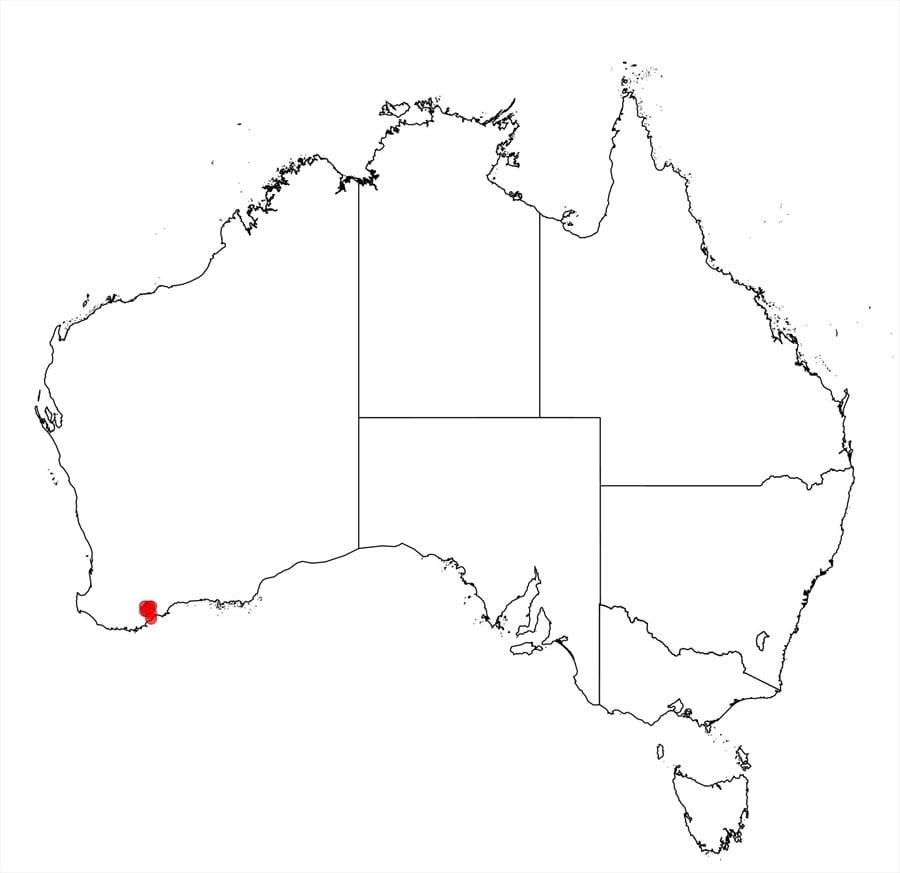Acacia keigheryi Maslin
WATTLE
Acacias of Australia
Common Name
Keighery’s Wattle
Family
Fabaceae
Distribution
Occurs in a relatively restricted area to the W and NW of the Stirling Ra., mostly between Ongerup, Boxwood Hill and N of Cape Riche, south-western W.A.
Description
Diffuse or low-domed shrub 0.3–0.5 m tall, rarely prostrate. Branches puberulous, the hairs patent to retrorsely ±appressed, sometimes dividing into short, wide-spreading, straight, rigid, innocuous or ±coarsely pungent branchlets. Stipules 0.8–2 mm long, innocuous to slightly pungent. Phyllodes in nodose fascicles of 2–5 (–8), single on new shoots, mostly oblong to narrowly oblong, oblong-elliptic or oblong-lanceolate, 3–7 (–9) mm long, 1–2 mm wide, l: w = 1.5–4, obtuse to sub-acute and innocuous, straight to shallowly incurved, ±patent to somewhat reflexed, glabrous or ±appressed-hairy mostly on margins and midrib; midrib not prominent; gland 1–2 mm above pulvinus. Inflorescences simple; peduncles (4–) 5–9 mm long, slender, strongly recurved in pod; heads globular, 3–4 mm diam., (17–) 20–28-flowered; bracteoles 1 mm long, the laminae ovate-lanceolate and c. 0.3 mm wide. Flowers 5-merous; sepals free. Pods narrowly oblong to sub-moniliform, 10–25 mm long, 3–4 mm wide, straight to curved, pure brown, normally glabrous, nerveless or obscurely reticulately nerved (nerves not longitudinally aligned). Seeds dark brown to blackish and clearly mottled dull yellow; aril dull cream.
Phenology
Flowers Aug.–Oct.; mature pods Dec.
Habitat
Grows on gentle slopes in often stony, gritty sand, sandy loam, sandy clay or clay over granite or gneiss, in very open Mallee woodland over heath scrub.
Notes
This species was noted by B.R.Maslin, Fl. Australia 11A: 552 (2001), as one of the variants under A. lullfitziorum, based on K.Newbey 1508. Although A. lullfitziorum is easily distinguished from A. keigheryi by its carpological characters, care is needed with non-fruiting specimens not to confuse the species. The pods of A. lullfitziorum are terete, 2–3 mm wide and clearly longitudinally reticulate with elongated nerve-islands, and its seeds are not mottled. Non-fruiting specimens of A. lullfitziorum can be recognized by their branches being normally glabrous and more numerously divided into ±pungent branchlets, and by its wider phyllodes. Acacia lullfitziorum has a wider geographic range than that of A. keigheryi and is generally normally found to the W and N of where the latter grows. See B.R. Maslin, Nuytsia 24: 167-168 (2014) for further discussion.
Conservation
Acacia keigheryi is listed as Priority Three under Department of Parks and Wildlife Conservation Codes for Western Australian Flora.
FOA Reference
Flora of Australia Project
Author
B.R. Maslin
This identification key and fact sheets are available as a mobile application:
URL: https://apps.lucidcentral.org/wattle/
© Copyright 2018. All rights reserved.






